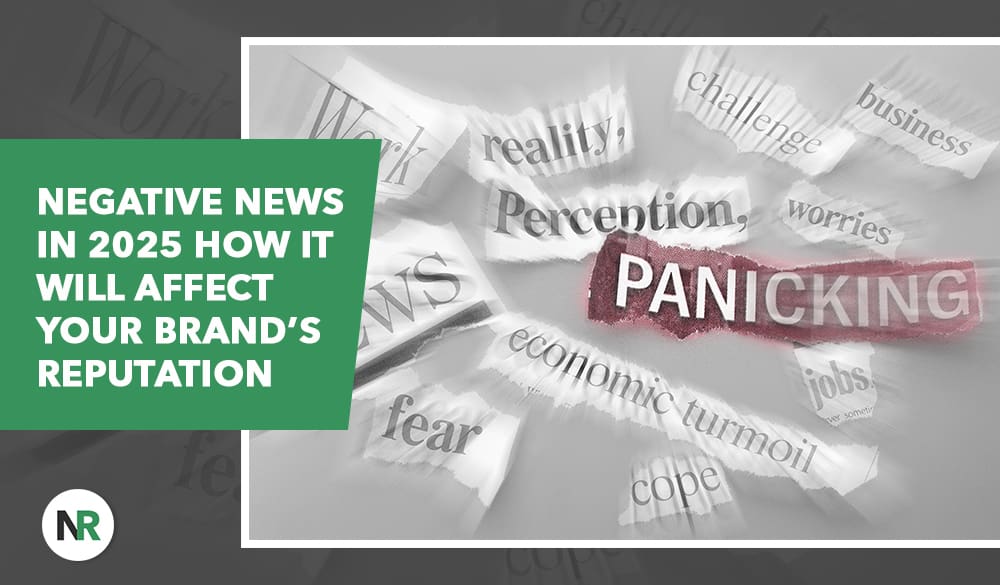Negative news dominates the headlines, saturating news outlets, social media platforms, and digital devices, potentially resulting in significant adverse consequences for both individuals and brands. Research shows that negative emotional content, amplified by social media algorithms, influences news consumers and shapes their perceptions of the world. While negative news stories can alert people to critical issues, they often come with a heavy toll on mental health, fostering anxiety, anger, and fear.
The Prevalence of Negative News
News media often prioritize bad news and negative language because it garners attention. Journalists and media sources frequently highlight events with high emotional impact, such as political topics or crises, as these tend to generate significant engagement. However, this downward trend in balanced reporting leaves audiences exposed to a constant stream of negative content, affecting their mental well-being and creating a distorted view of reality.
A Pew Research Center study showed that people tend to share negative news more frequently than positive or neutral news, further perpetuating a cycle of negativity. Social media algorithms amplify this effect by promoting emotionally charged headlines, making it difficult for users to escape the barrage of negative information.
How Negative News Impacts Brands
1. Damage to Public Perception
Negative news stories about a brand—such as scandals, product recalls, or legal issues—can significantly tarnish its reputation. News outlets and social media platforms quickly spread such stories, influencing audience sentiment and pushing negative content to the forefront of Google search results.
For example, a prominent politician embroiled in a scandal may see their public image deteriorate overnight due to the relentless coverage of negative news articles. Similarly, brands that fail to address negative news promptly risk losing trust among consumers, potentially resulting in a long-term impact on their bottom line.
2. Emotional Reactions and Consumer Behavior
News consumers often associate negative emotional content with the brands or events involved. Sentiment analysis shows that when people feel anger, fear, or disappointment after hearing bad news, they are less likely to engage positively with the brand or entity in question.
Brands must combat this by fostering positive news and creating balanced narratives that counteract negativity bias. Highlighting positive information, such as success stories or community initiatives, can help shift audience sentiment over time.
Get started with your free reputation evaluation today
The Role of Social Media Platforms in Amplifying Negative News
Social media platforms play a pivotal role in how people hear and share news content. Algorithms designed to prioritize engagement often favor stories with a negative tone, as these tend to elicit stronger reactions from users. This creates a feedback loop where negative information is more visible, further influencing public perception.
How Brands Can Navigate This Challenge:
- Monitor social media algorithms to understand how news content about their brand is being shared.
- Use sentiment analysis tools to gauge audience reactions and identify opportunities to present a more balanced view.
- Actively share positive or neutral news to dilute the impact of negative headlines.
Negative News and Mental Health
The constant exposure to negative news stories doesn’t just affect brands—it also impacts individual well-being. Research has found that consuming too much bad news can increase anxiety, anger, and fear, leaving people feeling helpless or disconnected from the truth.
A balanced approach to news consumption is essential for maintaining mental health. Encouraging audiences to diversify their news sources and engage with positive stories can help counteract the negative tone often present in reporting.
Fostering a Balanced View
While it’s impossible to eliminate negative news altogether, brands, journalists, and media sources can work together to create more balanced coverage that includes positive information and neutral news. By offering a holistic perspective on events, it’s possible to reduce negativity bias and help audiences form a more accurate understanding of what’s happening in the world.
Steps to Achieve Balanced Coverage:
- Highlight success stories and positive initiatives alongside critical news.
- Incorporate data and evidence to provide a comprehensive analysis of events.
- Use headlines that accurately reflect the story without sensationalizing.
- Engage audiences in constructive conversations about the future and potential solutions.
How Brands Can Counter Negative News
1. Act Quickly and Transparently
When negative news emerges, respond promptly with clear communication to address concerns and mitigate damage. This helps restore trust and prevents further speculation.
2. Leverage Positive News
Share positive information about your brand, such as community engagement, customer success stories, or innovations. A steady stream of positive content can overshadow negative headlines.
3. Engage Authentically
Build relationships with your audience by talking openly about challenges and solutions. Authentic communication fosters loyalty and helps consumers feel connected to your brand.
4. Monitor Sentiment
Use tools to track sentiment analysis and understand how news content is influencing audience perceptions. This data can guide your strategy for countering negative narratives.
Final Thoughts
Negative news is a constant in today’s media landscape, but its impact on brands and individuals can be managed with the right strategies. By fostering balanced reporting, sharing positive stories, and engaging authentically, brands can protect their reputation while helping audiences maintain a healthier perspective on the world.
